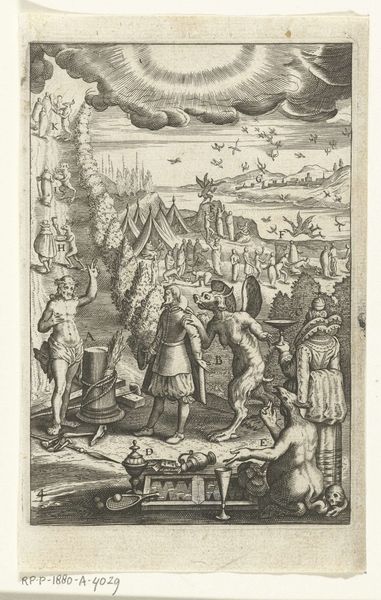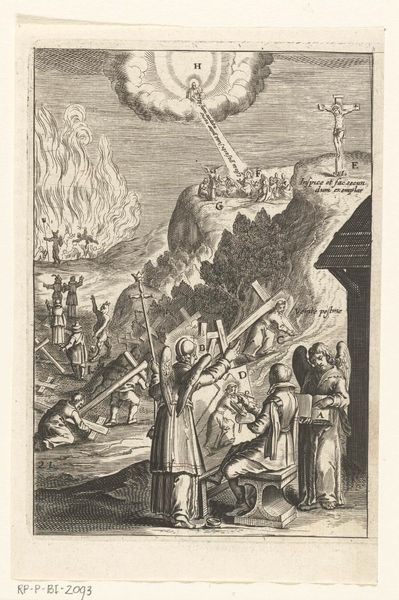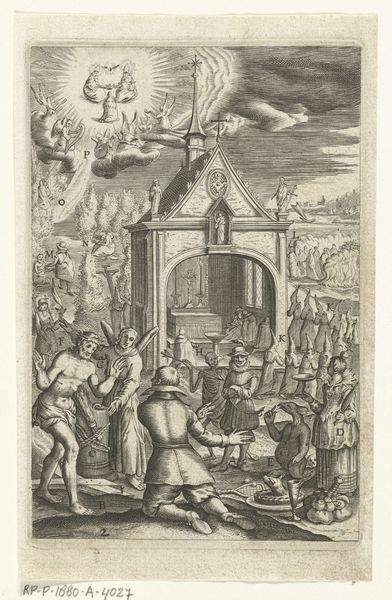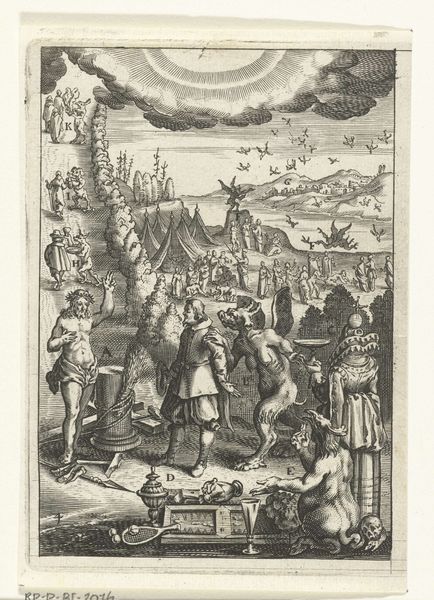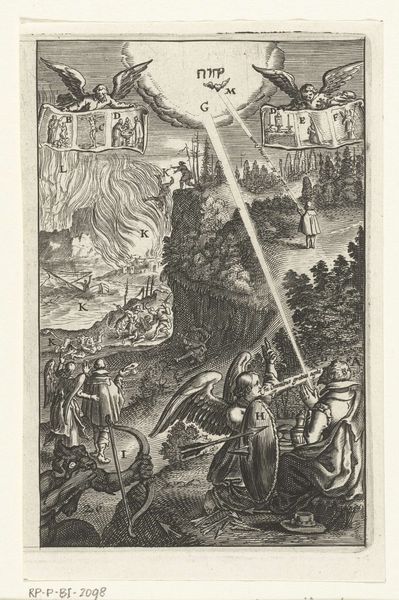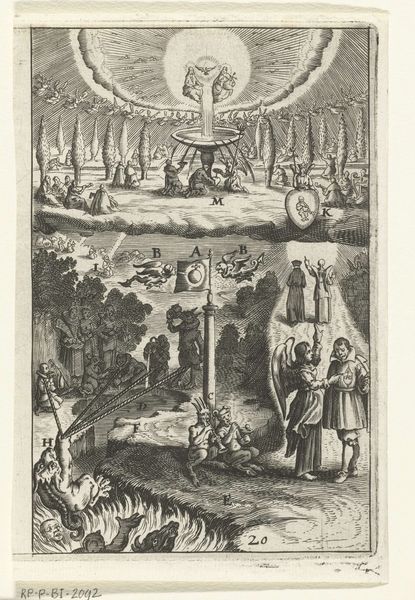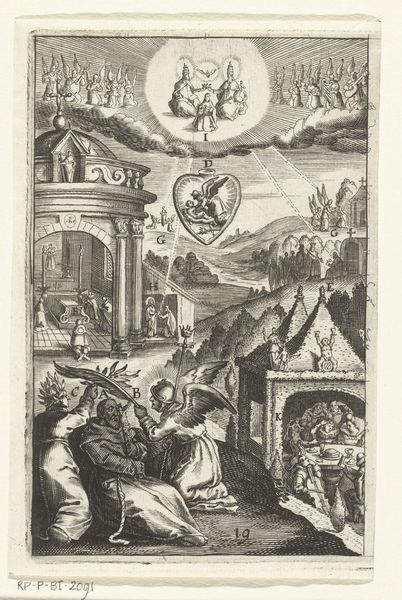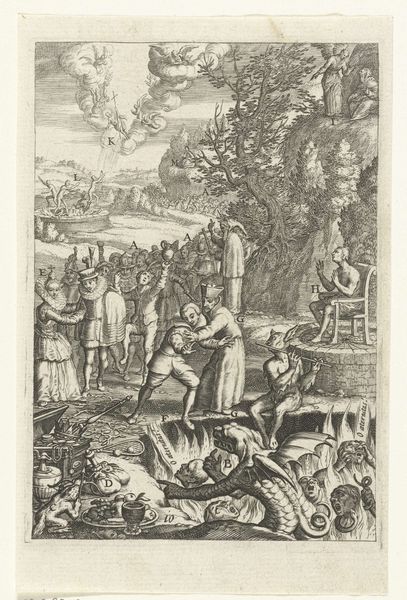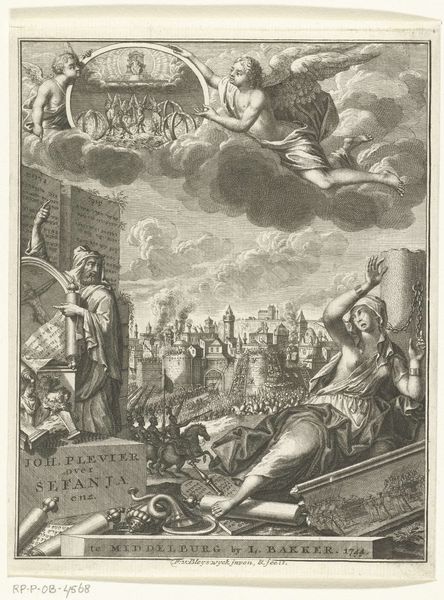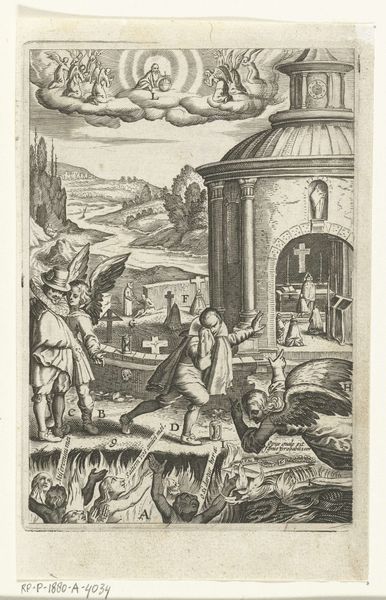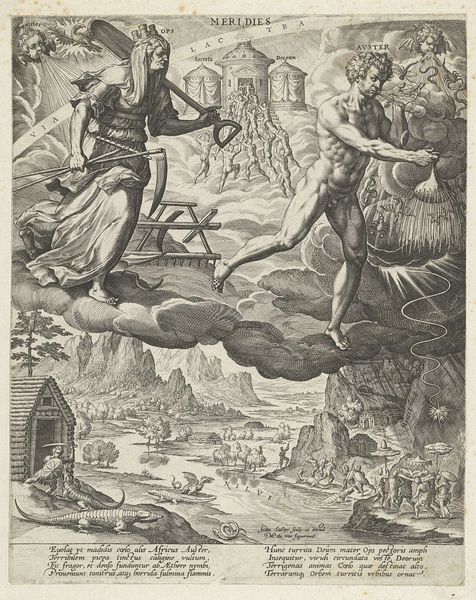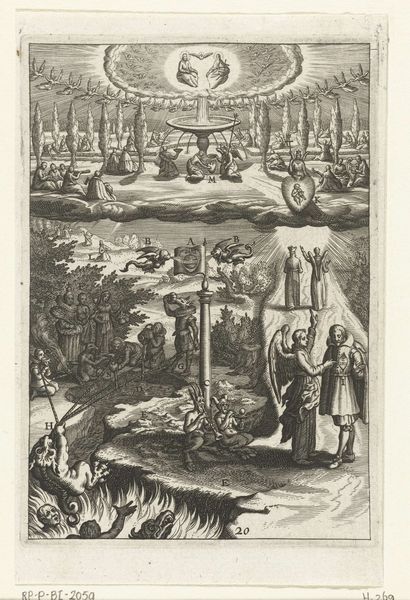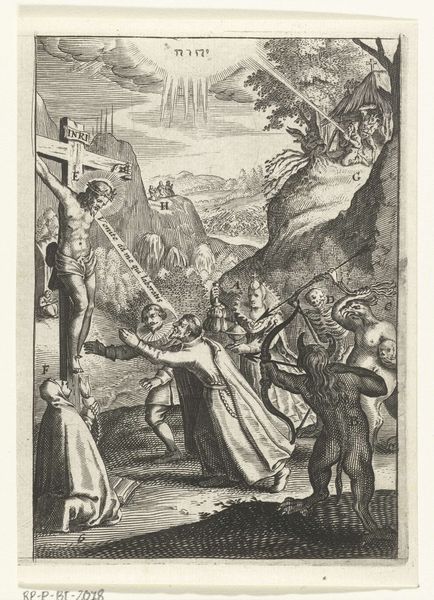
Embleem met man die ziet hoe vertrouwen in God een mens kan verlossen van zonden en doen leven in deugd 1620
0:00
0:00
boetiusadamszbolswert
Rijksmuseum
print, engraving
#
allegory
#
baroque
# print
#
pen illustration
#
figuration
#
line
#
history-painting
#
engraving
Dimensions: height 139 mm, width 96 mm
Copyright: Rijks Museum: Open Domain
Curator: Boëtius Adamsz. Bolswert created this intricate engraving around 1620. The Rijksmuseum holds this print, entitled "Embleem met man die ziet hoe vertrouwen in God een mens kan verlossen van zonden en doen leven in deugd," which translates to "Emblem with a man who sees how trust in God can save a man from sins and make him live in virtue." Editor: The immediate impact is this busy, almost frantic scene. A tightly packed composition with figures vying for space, all directed by this almost oppressive beam of light from above. Curator: Indeed. We're looking at a potent example of baroque allegory. Bolswert harnesses familiar imagery of sin, virtue and redemption – prevalent social and religious touchstones in the Dutch Republic at the time. One can imagine its accessibility for diverse audiences grappling with theological principles. Editor: Exactly! Consider the recurring symbols: the figure chained to the earthly desires, contrasted with the path leading toward the celestial city and, of course, the shield. The image works to illustrate the power of faith and freedom from sin through recognizable metaphors. It speaks to the human condition in an emotive visual language. Curator: The institutional framing is crucial too. Prints like these played a vital didactic role, circulating moral guidance within religious circles. Bolswert created multiple series of prints in service to religious institutions throughout his life. This artwork's narrative power depended on a public already literate in religious narratives and artistic traditions of the time. Editor: Absolutely, its cultural influence runs deep. The symbolism— the child lying beneath serpents symbolizing innocence succumbing to evil – persists in our modern visual language. This engraving continues to stir reflections on faith and moral struggle in today's socio-cultural landscape, just as it did in 17th-century Holland. Curator: Precisely. What Bolswert encapsulates here offers a powerful insight into how the early modern public experienced both visual and religious culture. Editor: A resonant artwork; it makes us reconsider how virtue and faith are continuously reshaped within different historical contexts, both them and now.
Comments
No comments
Be the first to comment and join the conversation on the ultimate creative platform.
